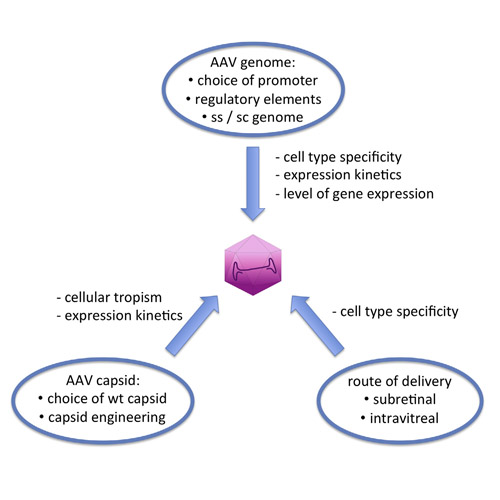Retinal gene delivery by adeno-associated virus (AAV) vectors: Strategies and applications
20-Jan-2015
European Journal of Pharmaceutics and Biopharmaceutics, Volume 95, Part B, Pages 343–352, doi:10.1016/j.ejpb.2015.01.009
European Journal of Pharmaceutics and Biopharmaceutics, online article
Adeno-associated virus (AAV) vectors are the most widely used vehicle systems for neuronal gene transfer. This popularity is based on the non-pathogenic nature of AAVs and their versatility making them a multifunctional vector system for basic research and clinical applications. AAVs are successfully applied in clinical and pre-clinical gene therapy studies for inherited retinal disorders. Their excellent transduction profile and efficiency also boosted the use of AAV vectors in basic research. The AAV vector system can be easily modified and adjusted at multiple levels to allow for optimized and specific gene expression in target cells. Here, we will provide an overview on the AAV vector system and its applications focusing on gene transfer into retinal cells. Furthermore, we will outline and discuss strategies for the optimization of AAV gene transfer by modifications to the AAV vector expression cassette, the AAV capsid or the routes of vector administration.











